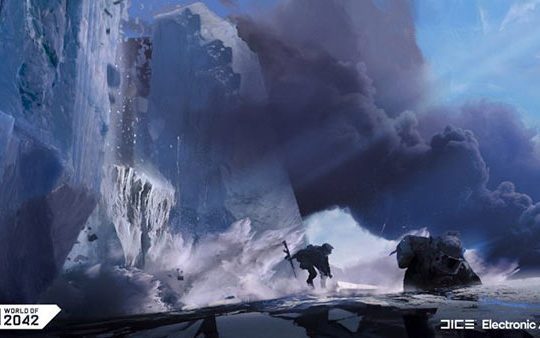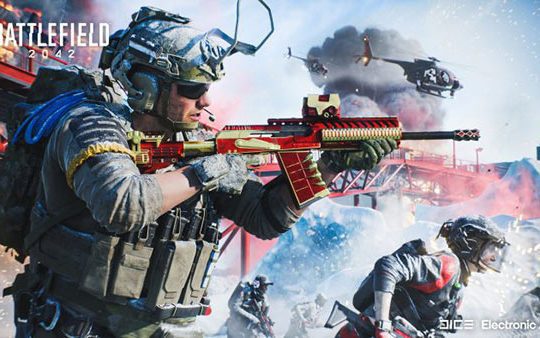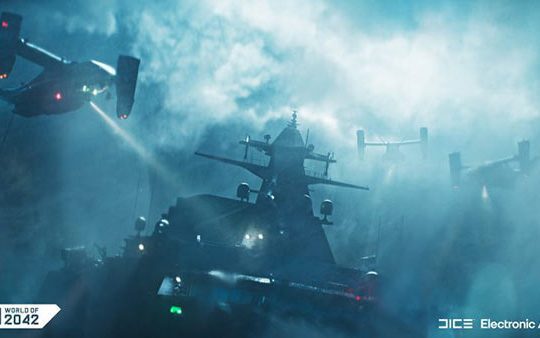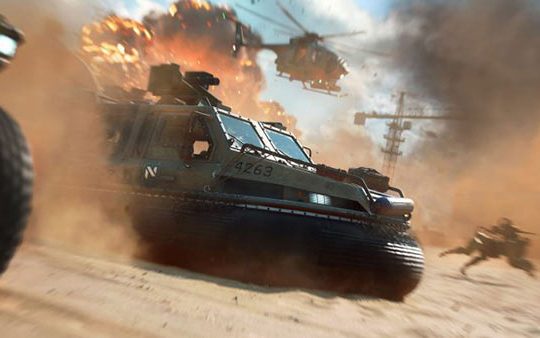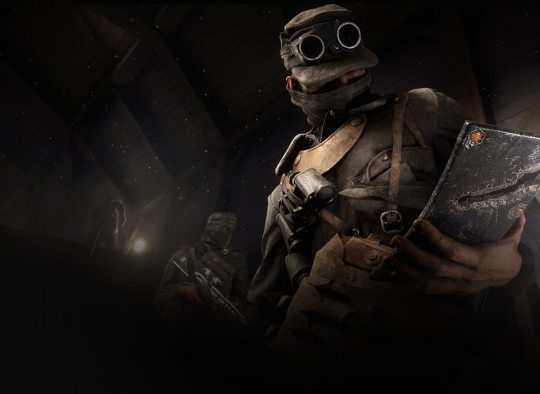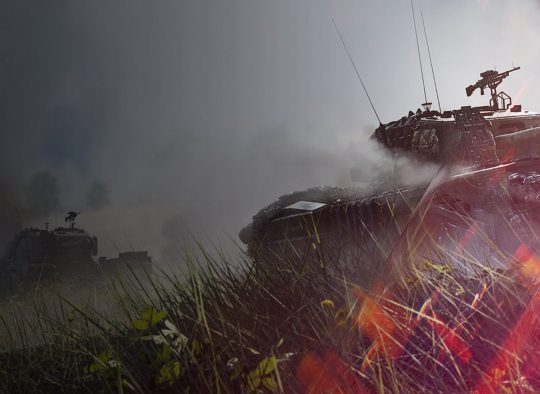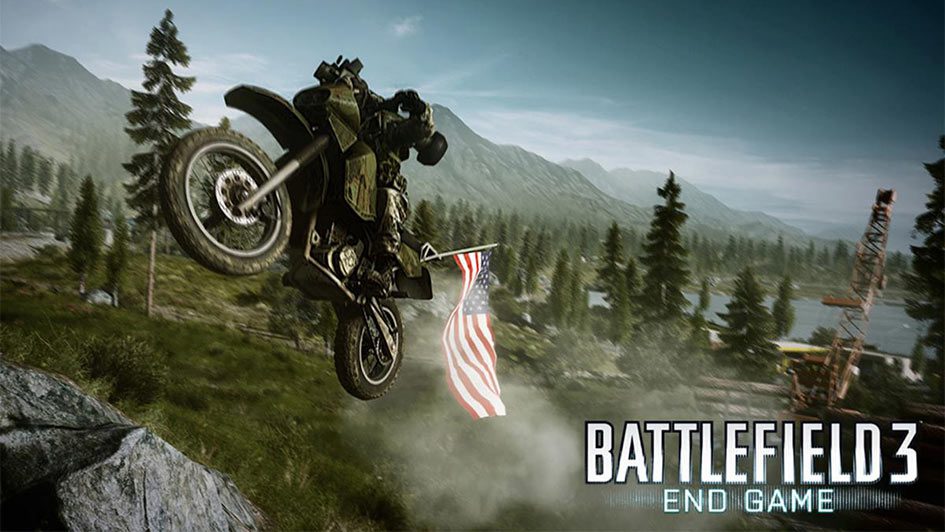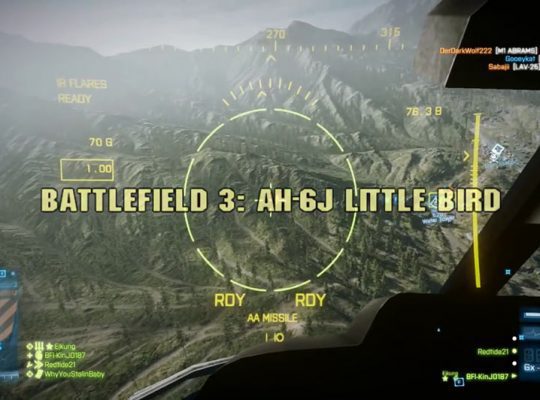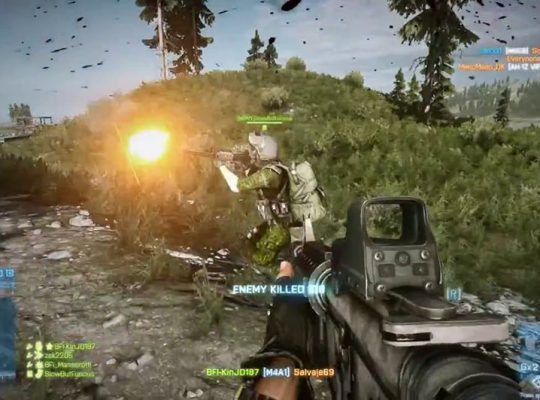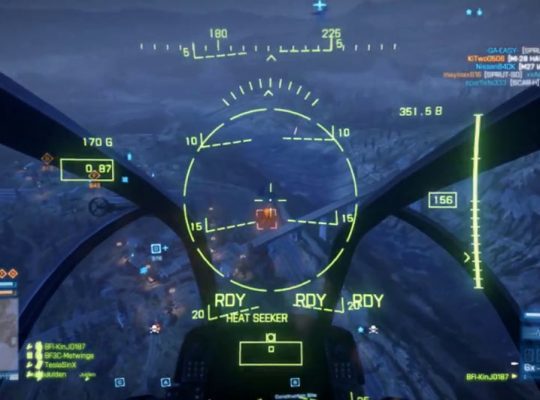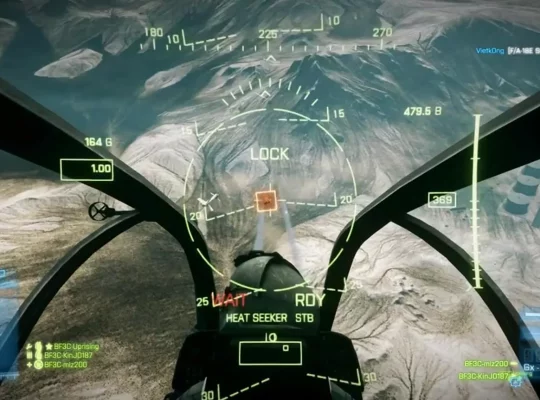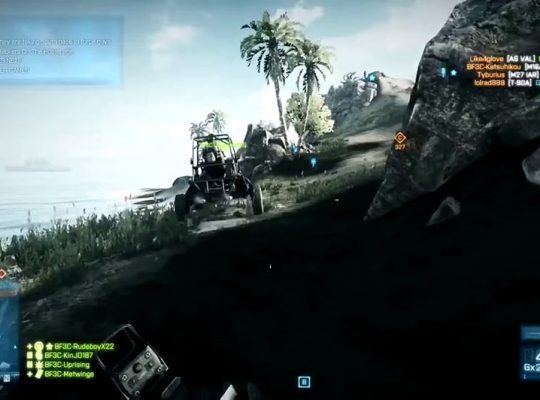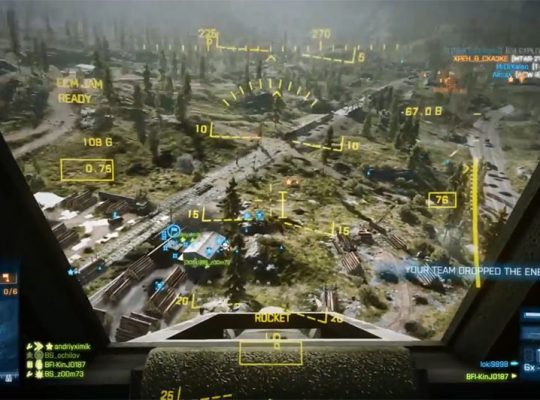Battlefield 3 Operation Riverside Dirt Bike Test – The dirt bike is one of the fastest and most agile vehicles ever in a Battlefield game.
In this blog post, QA Analyst Malin von Matern explains how End Game became the perfect playground for this new and exciting ride. Check out the video below for some of the action.
Hey there, I’m Malin von Matern, QA Analyst at DICE. With the work of End Game in my rear-view mirror, the motorcycle is – hands down – my favourite vehicle when it comes to quickly getting to where I want while still having a blast. When I have some time to spare I often boot up a level and see what I can make the motorbike do, just for fun.
When the jumps started to take form on the four different End Game levels I wanted to make sure that they didn’t just feel randomly placed – but rather something that lived naturally within the maps and their gameplay. I wanted every single one of the jumps to feel authentic, fun and just a little bit crazy. Check out the video below where we had some dirt bike fun trying out a few of the jumps in our play test.
The QA (Quality Assurance) Analysts at DICE are specialists that focus primarily on how the game plays and how everything fits together from a consumer’s point of view. In my position, I also help out polishing features and backtracking bugs to make sure we don’t redo old mistakes, along with – of course – helping out to eliminate the present ones. My work on the upcoming expansion End Game focused a lot on polishing and tweaking the motorcycle jumps that can be found across the levels.
“I wanted every single one of the jumps to feel authentic, fun and just a little bit crazy”
The first thing you might notice when playing the different levels is that the jumps on each respective level don’t always look the same. On Operation Riverside for example, the jumps are very clear and often made out of metal ramps supported by dirt piles, compared to Kiasar Railroad where the jumps are less obvious, moulded with the landscape and often made out of wooden planks laid out on dirt mounds. This encourages players to explore the levels to see if they can find all the jump spots.
Each and every jump has been moulded by hand to exclusively fit the area they are placed in. We worked in the mindset of carefully bringing the jumps into the flow of the map instead of trying to force them in where they don’t belong.
Operation Riverside is one of four maps in End Game, and one that features a lot of roller coaster style jumps tailored for the new and agile dirt bike.
From bump to jump
When we created the jumps I worked very closely with the level artists and designers. The bigger jumps were often placed by one of them, while I later moved in and made sure the jumps were actually doable and just difficult enough to be enjoyable.
Creating a well-designed and successful jump requires more than just making a bump in the ground or adding a random ramp to a prop. To create a jump that works as intended, you need to make sure you work with the physics engine in the right way, almost like when building a jump in real life. If the jump is too long or too steep you will lose speed and possibly fail the jump, or the jump will simply become dull and forgettable. Make the jump too flat and it will likewise lose its edge.
“The jumps were carefully moulded to keep that awesome roller coaster feeling”
Something I learned is that you want the jump to have a nice curve in order to simulate the g-forces that take place when pulling off jumps in real life. The curve also helps the motorbike keep its momentum all the way through the jump, giving you those epic “big air” moments. I have always liked watching downhill MTB videos, which is something I used to my advantage when working on the jumps in End Game to make them feel both epic and realistic.
One good example of a jump that was close to impossible to make in the early stages of production was the double-jump formation on Operation Riverside. The jumps and the landing areas were misaligned, causing the player to crash and stop dead upon landing. The river in that area was also unforgivingly deep at the time, which caused players to lose their bikes if they ended up falling short. After a few hours of work though, the jumps were shaped into what they are today – carefully moulded to keep that awesome roller-coaster feeling, while still being smooth and possible to pull off.
The smaller jumps were often spawned out of prototypes of some crazy “what if” ideas, where I often discussed with the different level artists about where I thought a jump would be fun to have. Many of them were cut – like one crazy idea where you would jump over one of the helicopter pads in the US base in one early version of a level – but a few of them can still be found in the game.
Quality jumping
One thing that is very easy to forget when building a jump is that it’s more than just the time you spend in the air. It’s a combination of several things: the approach, the jump and the landing.
If you don’t give the player enough information about the jump on the approach, it’s easy to misalign the jump and end up crashing into a rock or a tree. An example of this is the problem we had with the mega jump on Operation Riverside mentioned earlier. When players came up on the second jump while approaching from the Russian side of the river, many ended up crashing straight into the rock wall. The reason this happened was because the jump itself blocked the players’ view, forcing them to guess the correct alignment for the jump.
Even those who had taken the same jump several times still made the same mistake, including myself, regardless of the hours I’d spent tweaking it.
The way I solved this was to give the player a subconscious guide away from the rocky mountainside. I placed a tree between the jump and the wall, high enough so that its top branches were visible over the tip of the jump, as a natural indication that there was an obstacle just out of sight. And what I soon noticed was that almost everyone that tried the jump after the change succeeded on their first try.
What I personally love with solutions like this is that whenever I run the jump myself, I rarely actually think about the tree being there. I just automatically steer away from it when approaching the jump. It’s little details like this that often make the difference between failure and success and it’s fascinating to see the effects they have on player behaviour.
One thing that’s important to remember is that apart from spending a lot of time having a go at all the jumps yourself, you also need the opinion of others. I often handed control to colleagues or simply walked around in the studio during playtests to see how different players used the bike and what complications they ran into when attempting jumps. Getting feedback from others is the best way to know if the tweaks you are doing are working as intended.
You can check out more Battlefield videos in our Video Gallery or our YouTube channel, thanks for watching.


